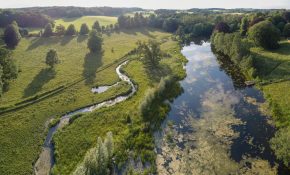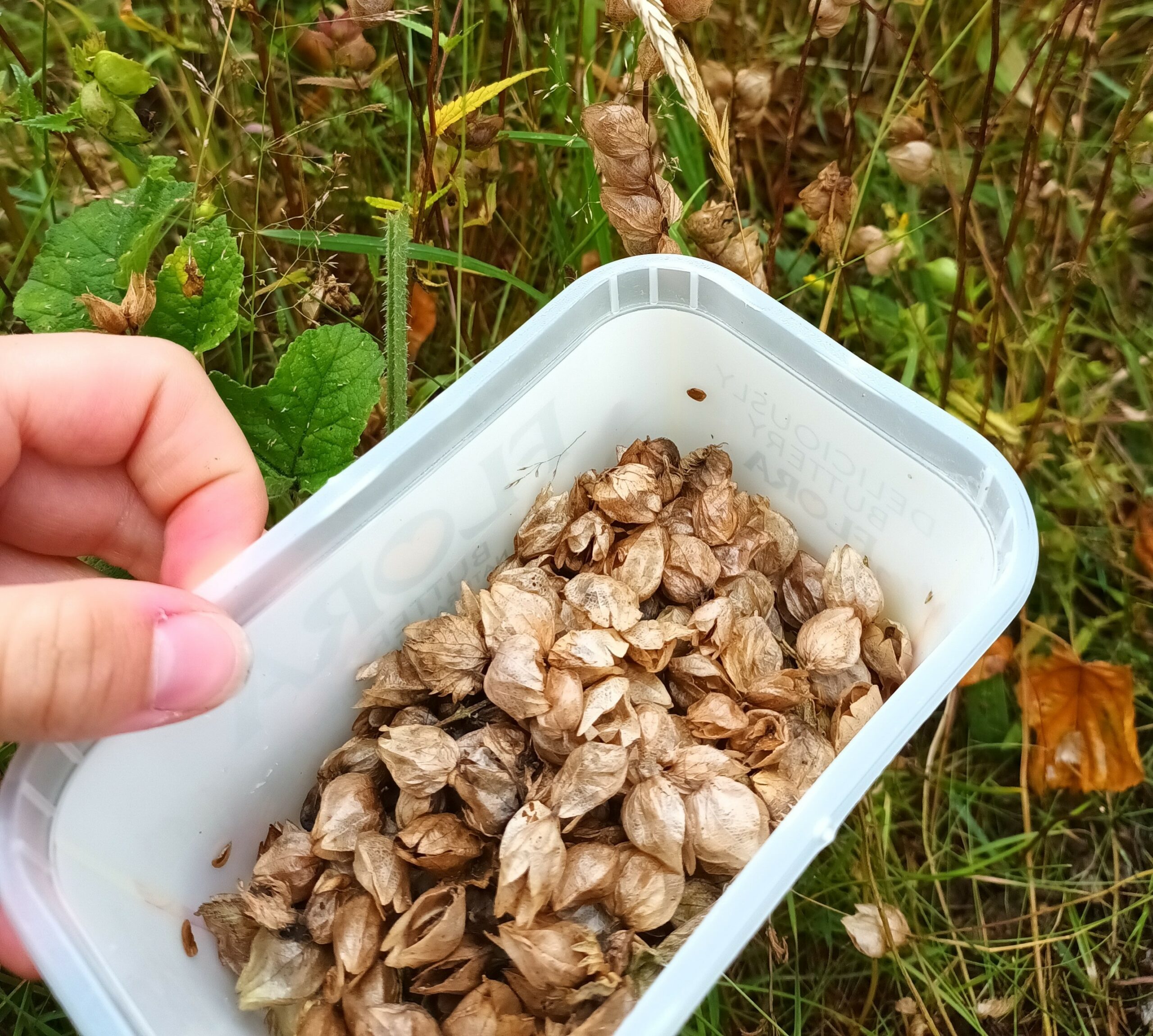Norfolk’s grasslands
Monday March 27th, 2023
Following yesterday’s BBC Wild Isles and its focus on our amazing grasslands, we thought we’d turn a spotlight on the grasslands of Norfolk and our restoration work to ensure their survival.
Grasslands can be incredibly diverse habitats, with factors such as soil type, hydrology, climate and management techniques having a huge influence on the makeup of species found within them. Broadly speaking, grasslands can be split into the following categories: species-rich or species-poor; improved or semi-improved; and calcareous (chalk), neutral, marshy or acid grassland. Impressively, examples of all these types of grassland can be found across Norfolk.
In 2021, we embarked on a wildflower restoration project, funded by a partnership between Air Wick and WWF, to assist landowners and environmental organisations to restore and create new grassland habitats. This work supports a wide array of species and provides many benefits including natural flood management, carbon sequestration and improving green spaces for public well-being.
Types of grassland
Here are descriptions of some of the different grassland habitats that can be found in Norfolk:
Purple moor-grass and rush pastures or marshy grassland
This is a species-rich, semi-natural grassland with abundant purple moor-grass and/or jointed rushes (sharp-flowered rush, jointed rush or blunt-flowered rush) on poorly drained neutral and acidic soils of the lowlands and upland fringe. Purple moor-grass and rush pasture is often associated with springs, seepage lines and slopes surrounding waterlogged depressions and hollows. Typical grasses include: creeping bent, crested dog’s-tail, purple moor-grass, quaking-grass, red fescue, sweet vernal grass, tufted hair-grass, velvet bent and Yorkshire-fog. Typical wildflowers include: devil’s-bit scabious, marsh thistle, fen/marsh bedstraw, common knapweed, lesser spearwort and meadowsweet.
Lowland meadows
Lowland meadows are species-rich, semi-natural grassland on free-draining, neutral soils in the lowlands and upland fringes, including species-rich floodplain grassland. They are managed by cutting (generally for hay or haylage in wet years) and/or grazing and may be called a number of different things such as hay meadows, floodplain meadows and grazing pasture. Typical grasses include: cock’s-foot, common bent, crested dog’s-tail, red fescue, meadow fescue, sweet vernal grass, yellow oat-grass and Yorkshire fog. Typical wildflowers include: common knapweed, common bird’s-foot-trefoil, common meadow-rue, marsh valerian, meadow vetchling, meadowsweet, narrow-leaved water-dropwort and ragged robin.
Lowland calcareous (chalk) grassland
This is species-rich, semi-natural grassland on chalk and limestone in the lowlands and is managed primarily by grazing. Typical grasses include: blue moor grass, cock’s-foot, common bent, crested hair-grass, downy oat-grass, meadow oat-grass, quaking-grass, sheep’s fescue, tor-grass, upright brome and yellow oat-grass. Typical wildflowers include: common bird’s-foot-trefoil, common rock-rose, cowslip, eyebright, greater knapweed, lady’s bedstraw, milkworts, small scabious and wild thyme.
Lowland dry acid grassland
Lowland dry acid grassland is semi-natural grassland on nutrient poor, free-draining soils in lowland areas. It typically has fine-leaved grasses and sometimes occurs in a mosaic with lowland heath, and is managed primarily by grazing. Typical grasses include: common bent, early hair-grass, heath grass, sheep’s fescue, sweet vernal grass and wavy hair-grass. Typical wildflowers include: common centaury, common stork’s-bill, heath bedstraw, heath speedwell, mouse-ear hawkweed, rough/ lesser hawkbit, sheep’s sorrel, tormentil, violets and wild strawberry.
Semi-improved grassland
Semi-improved grassland occurs on a wide range of soils and will have undergone some form of improvement in the past, usually for agriculture through fertilisation. Due to the enrichment of nutrients in the soil, these grasslands may be less species-rich as the wildflowers are unable to compete with more dominant grass species, or historic management led to the grassland being cut before wildflowers were able to flower and set seed, leading to their decline over time. Sometimes, the grassland may have some wildflowers such as common vetch, bush vetch and red clover, but it may still lack the diversity of indicator species present in a priority grassland habitat. Typical grass species include cock’s-foot, common bent, creeping bent, crested dog’s-tail, false oat-grass, meadow fescue, meadow foxtail, red fescue, sweet vernal grass, timothy, tufted hair-grass and Yorkshire-fog. To improve the diversity of these grasslands, they can be re-seeded with a diverse wildflower and grass mix.
Reference: How_to_identify_different_types_of_grassland.pdf (magnificentmeadows.org.uk)

Seed drilling at Gorgate Farm © Rosie Begg

Volunteers hay strewing at Poringland © Henry Walker
Unique grassland habitats within Norfolk
East Anglia is a unique lowland region with geological deposits of sands, clays and peats laid down by former icesheets, with a dry and mild climate contributing to the array of different grassland habitats to be found. Within Norfolk, there are peat deposits in the Fenlands and the Broads, heavy boulder clay soil in south Norfolk, and extensive dry grassy heaths on the sands of the Brecks, which are home to many rare plants. West Norfolk and North Norfolk have small pockets of chalk grassland due to a band of chalk which occurs at the surface or beneath a thin cover of young sedimentary rock throughout the region (this is also responsible for our internationally rare chalk streams). Drier grasslands in Norfolk are the product of ancient deforestation and centuries of livestock grazing, and may be found in gardens, old churchyards or old paddocks which have never been improved with fertiliser.
The freshwater river valley grazing marshes of Broadland and the Fens are managed through seasonal grazing, typically by cattle. These wet grasslands have a rich ecology, supporting numerous species and are important breeding locations for wading birds such as lapwing, redshank and snipe, as well as overwintering ground for wigeon, migrant geese and swans.
Most of the fens were drained centuries ago, resulting in a flat, dry, low-lying agricultural region with numerous drainage channels and man-made rivers (dykes and drains). Much of the restoration of the grasslands in these areas involves allowing natural processes, such as flooding, to occur by reconnecting the watercourses to the floodplain.
The Breckland area is designated as a Special Area of Conservation (SAC), in part due to it being home to the largest surviving area of a rare grassland type ‘CG7 Festuca ovina – Hieracium pilosella – Thymus praecox grassland’. The grassland is rich in rare species characteristic of dry, winter-cold, continental areas, and approaches the features of grassland types in central Europe more than almost any other semi-natural dry grassland found in the UK. The terrain is relatively flat, with few physical variations, but there are mosaics of calcareous grassland and heath/acid grassland, giving rise to patterns of structural variation.
References:
Action
Through Air Wick and WWF’s partnership to bring nature back and restore wildflower habitats across the UK, we’ve been working with landowners to revert arable fields into meadows using hand-collected seed to improve floristic diversity, fencing meadows to allow grazing, spreading green hay, and reinstating management regimes to allow Norfolk’s wild grassland habitats to flourish. So far, over 260ha of wildflower meadow has been restored and created, with more to follow.
Find out more here.






